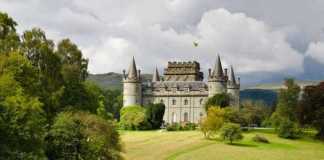A tropical island with a contentious past and future, Cuba is one of the most unique and beautiful destinations in the world. Many people think Cuba is inaccessible to visitors, and while infrastructure is still improving, the country is actually home to vibrant cities, incredible landscapes and a thriving Caribbean-Latin American culture found nowhere else. Although many visitors often head straight to Varadero, Cuba’s most famous stretch of white sand, which is filled with resorts, the capital of Havana hides spectacularly preserved architecture and fascinating history, along with plenty of things for tourists to see and do.
So, what is Cuba known for? You can find out what to expect in Cuba through the many famous things that were birthed here – namely, cigars, cocktails, rum and Latin American music genres. The Cubans love to party and dance, cigars are better quality than anywhere else, and the famous Havana Club rum is made right on the island. This Communist country also has a complex history, spanning the Cuban Revolution and Cuban Missile Crisis, and ongoing tensions with other countries. Whether you go horse-riding in the lush mountains of Vińales, explore the cobblestone streets of Havana or beach-hop around the coast, the country has endlessly incredible experiences to check out.
Contents
What Is Cuba Known For?
1- Havana
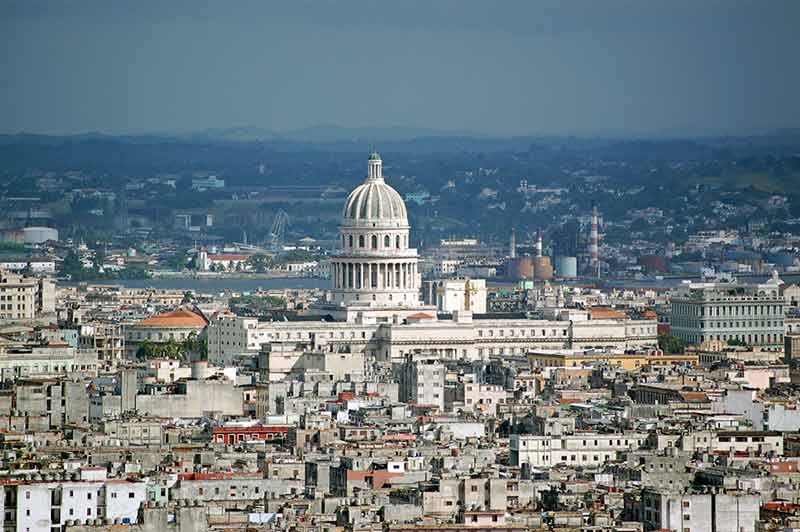
Havana is Cuba’s exciting capital city, where cigar smoke drifts out of windows, classic cars cruise the streets and live music floats out of every bar.
The quarter of the city known as Old Havana is a UNESCO World Heritage Site, thanks to its cobblestone streets, colonial architecture and green plazas where locals congregate.
On the city’s seafront, the Malecon is a famous stretch of road winding down the coast, where you’ll see people fishing, chatting and jogging each day next to the ocean.
Havana’s parliament building, El Capitolio, might also look familiar to those who have been to Washington, D.C., as the building is almost identical.
Despite embargoes on many food items, Cuban cuisine is mixed and delicious, and Havana has restaurants from Italian and Russian to local haunts serving Spanish-style tapas, while the dozens of bars serve Cuba’s famous cocktails.
Check out the Hotel Nacional, Havana’s oldest five-star hotel where celebrities and the elite like to stay, for a classic mojito at the bar.
2- Rum
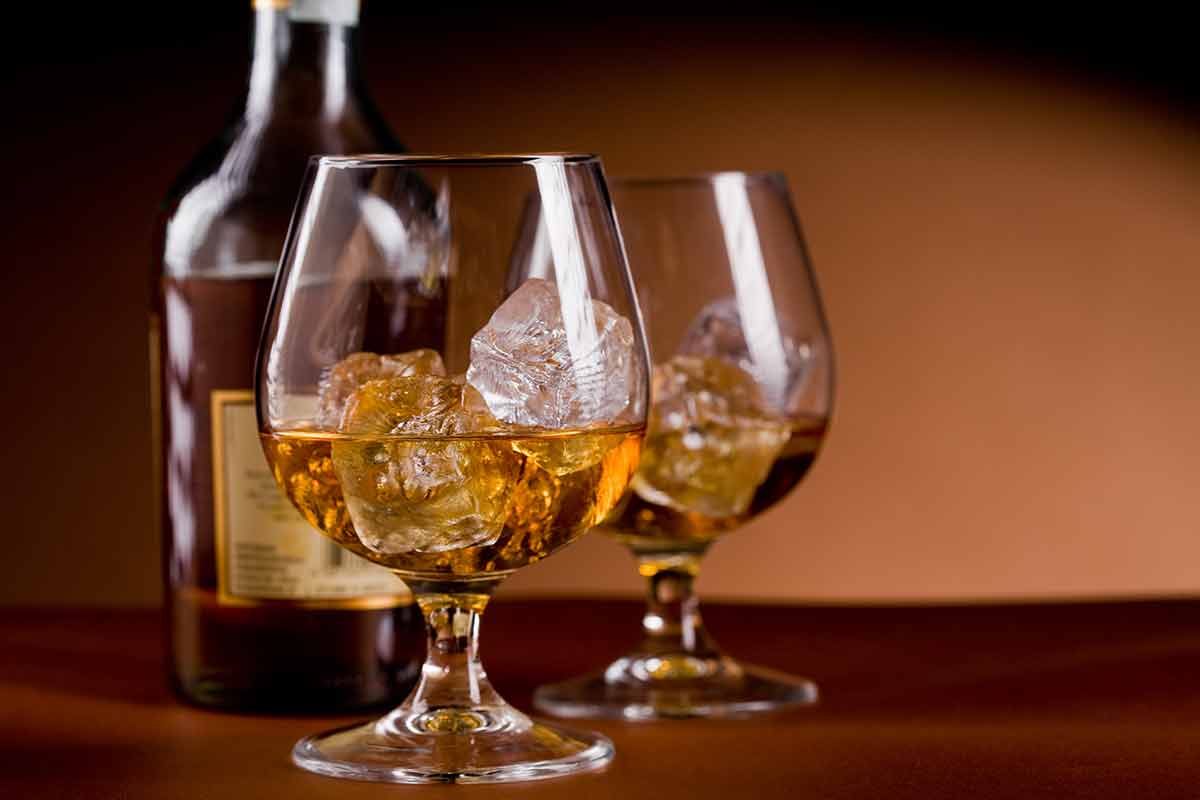
If Cuba were known for just one thing, it would most likely be rum.
Rum has become an essential part of Cuban culture and is produced in vast quantities across the country.
Cuban rum is smoother and lighter than that of other Caribbean islands, making it one of the main economic drivers in the country, as well as the fact that Cuba grows the most sugar cane in the world.
Havana Club and Bacardi, sold around the world, are the most famous brands, but there are many more that you can find in minimarts on the islands, and prices are ten times cheaper than you’ll pay at home!
There’s also a rum museum in Havana, where you can discover more about the history of the spirit and taste a few samples.
3- Cocktails
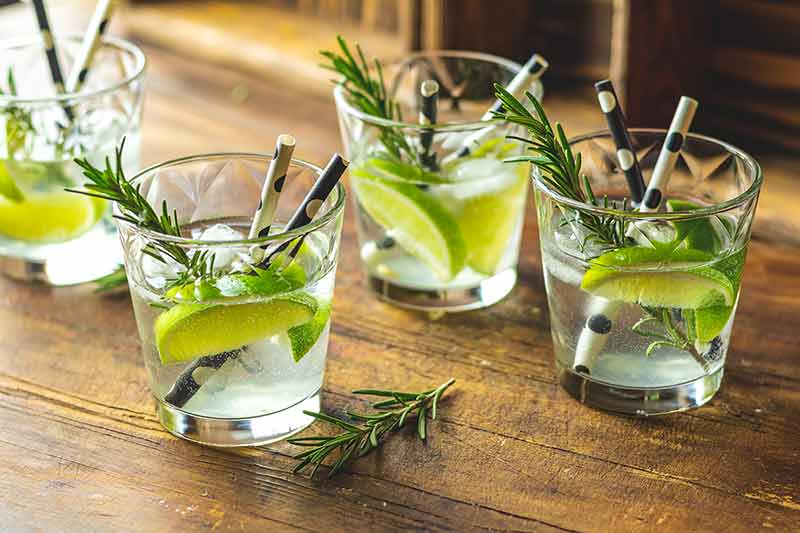
If rum is the country’s drink of choice, then it may be unsurprising to learn that this has led to a few famous drinks being invented in the country.
There are four significant Cuban cocktails, the first of which is the Cuba Libre, the country’s national drink made with rum and coke.
The second is the much-loved mojito, made with rum, sugar, sparkling water and mint, which was supposedly invented in the 16th century but is now most famously served at Havana bar El Bodeguita del Medio, which has queues around the block.
Thirdly, the daiquiri is made with rum, lime juice and sugar, much like a mojito; however, in modern days, it’s often frozen or given fun flavours like passionfruit and strawberry.
Visit El Floridita bar in Havana, where the daiquiri was invented for the best cocktail you’ll try and pull up a seat where Ernest Hemingway famously liked to drink at the bar.
The final drink enjoyed by locals is the canchanchara; a delicious blend of rum, lime and honey that’s a must-try in Cuba!
4- Cigars
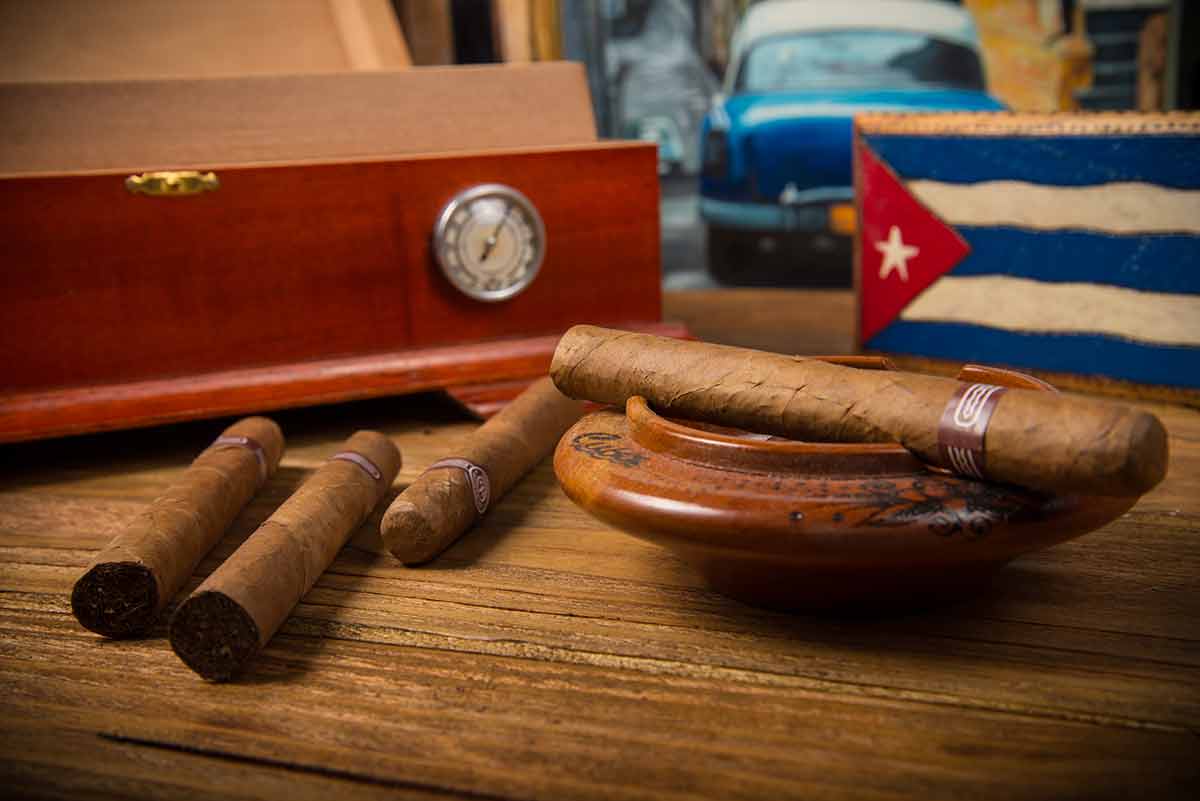
Tobacco has always been popular throughout the Caribbean, but if you look at the most famous cigars sold around the world, most of them hail from Cuba.
Cuban cigars are considered to be the best in the world, with numerous factories across the country where locals sit all day, carefully rolling dried tobacco leaves into neat cigars before they’re packed up and branded.
In Cuba’s western region of Viñales, the farms grow and dry the tobacco and you can tour plantations here, while in Havana, you can also tour the rolling factories themselves and learn more about the process.
Some of the most famous cigar brands from Cuba include Cohiba, Montecristo, Partagas, and Romeo y Julieta.
Avoid buying from people on the streets as the quality is questionable, but don’t worry, there are cigar shops everywhere and prices are pennies compared to what cigars cost in the Western world.
5- The Cuban Revolution
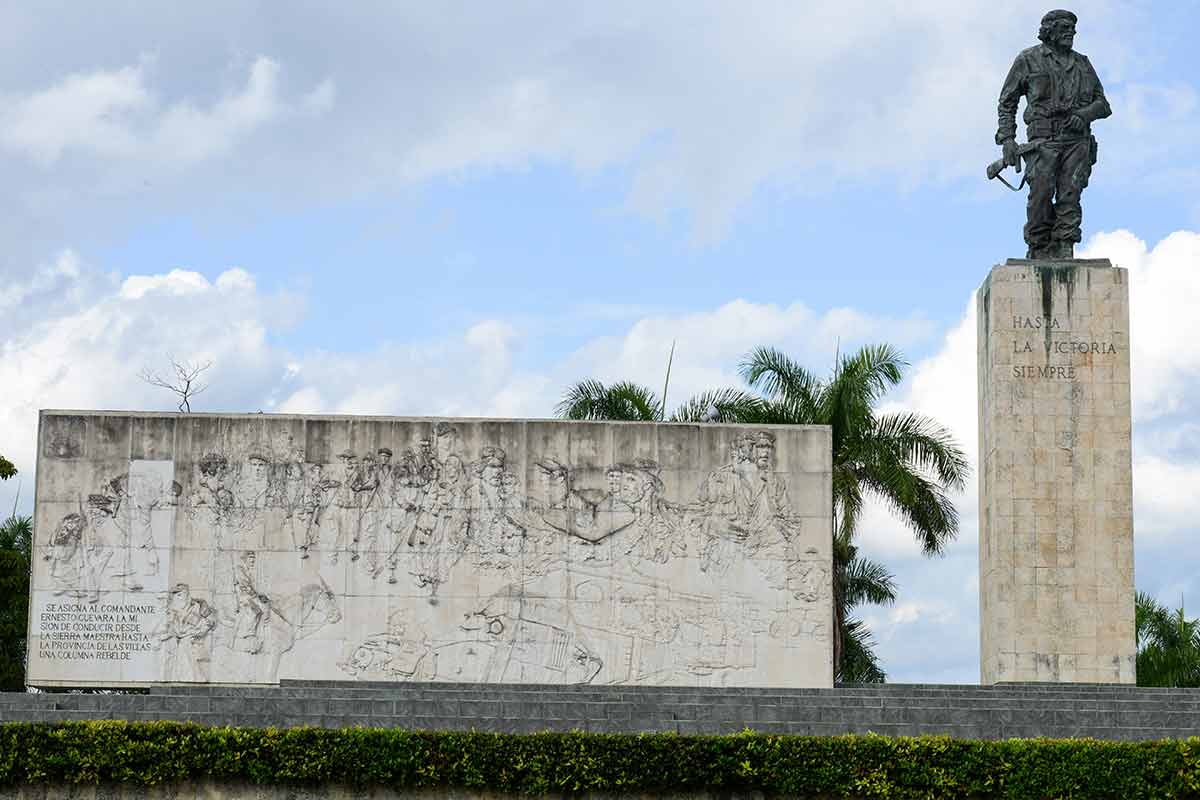
The Cuban Revolution is the country’s most famous point in history.
The revolution began in 1953, leading to the overthrow of then-President Fulgencio Batista by followers of Fidel Castro in 1959.
This was a turning point in Cuba’s history as the country became a communist nation from this point.
Fidel Castro led the country right up until 2008, with many more issues and tensions arising throughout his rule.
One of the best places to understand the history better is at the Museo de la Revolucion in Havana.
The museum has lots of historical artefacts dating back far beyond the revolution, but also interesting sights from this period, such as exhibits on the warfare that took place in Cuba’s mountain regions where Castro himself fought, alongside another famous Cuban figure, Che Guevara.
You may also be interested in:
- What is Turkey known for?
- What is Portugal known for?
- What is Greece known for?
- What is France known for?
- What is Belgium known for?
- What is Switzerland known for?
- What is Poland known for?
- What is Australia known for?
- What is Mexico known for?
- What is Germany known for?
- What is Croatia known for?
- What is Hungary known for?
- What Is Romania known for?
- What is The Netherlands known for?
- What is Scotland known for?
- What is Canada known for?
- What is Japan known for?
- What is China known for?
- What is Singapore known for?
- What is Vietnam known for?
- What is Thailand known for?
- What is Cuba known for?
- What is Argentina known for?
- What is Colombia known for?
- What is Spain known for?
- What is Italy known for?
- What is Ireland known for?
- What is Oregon known for?
- What is Colorado known for?
- What is Tennessee known for?
- What is Hawaii known for?
- What is Alabama known for?
- What is Illinois known for?
- What is Mississippi known for?
- What is Nevada known for?
- What is Maine known for?
- What is Idaho known for?
- What is Delaware known for?
- What is Maryland known for?
- What is Wisconsin known for?
- What is Miami known for?
- What is Virginia known for?
- What is West Virginia known for?
- What is Massachusetts known for?
- What is Boston known for?
- What is Florida known for?
- What is Kentucky known for?
- What is Indiana known for?
- What is Montana known for?
- What is Nebraska known for?
- What is Pennsylvania known for?
- What is Vermont known for?
- What is Arizona known for?
- What is California known for?
- What is South Carolina known for?
- What is North Carolina known for?
- What is Texas known for?
- What is Michigan known for?
- What is Ohio known for?
- What is Louisiana known for?
- What is Oklahoma known for?
- What is New York known for?
- What is Georgia known for?
- What is Utah known for?
- What is Connecticut known for?
- What is Rhode Island known for?
- What is Iowa known for?
- What Is Minnesota known for?
- What is New Hampshire known for?
- What is Arkansas known for?
- What is New Jersey known for?
- What is Missouri known for?
- What is North Dakota known for?
- What is South Dakota known for?
- What is Wyoming known for?
- What is Alaska known for?
- What is Washington known for?
- What is Seattle known for?
- What is New Mexico known for?
- What is Kansas known for?
- What is San Francisco known for?
- What is Chicago known for?
- What is Denmark known for?
- What is Norway known for?
- What is Sweden known for?
6- The Cuban Missile Crisis
Another period of Cuba’s history most people are likely to have heard about is the Cuban Missile Crisis.
This period of history involved serous tensions between the United States and the Soviet Union after the latter placed nuclear-armed ballistic missiles in Cuba.
After the United States discovered this, they attempted to block more missiles from being delivered to Cuba and both regions came close to full-blown nuclear war.
It’s a fascinating and scary period of history, and if you’re keen to learn more, head to Cuba’s most famous hotel, the Hotel Nacional.
Although the hotel has long been a haunt for the rich and famous, you can do a tour that takes you through underground tunnels used during the crisis, plus a small museum with more information.
This period of history is essential to understanding Cuba today, as it led to many present day political situations, such as the current embargo on Cuba by the USA and difficulty in visiting for US citizens.
7- Fidel Castro
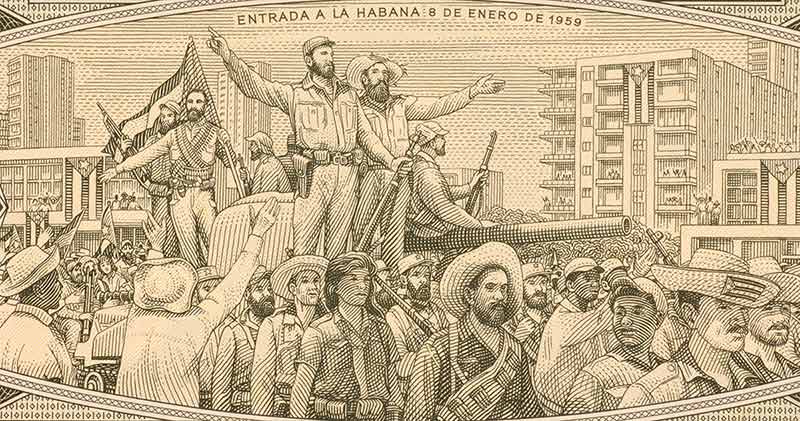
Fidel Castro is one of the most famous figures to come out of Cuba, who as we have mentioned, was the leader of the country between 1959 to 2008.
He initially began participating in revolutionary societies and protests while he was still at university before getting into politics.
After President Batista took power, Castro started a resistance movement with multiple attacks on the government that eventually led to the Cuban Revolution.
Castro changed Cuba’s history forever by making it a communist country, and while many have criticised some of his policies, he did many good things for the Cuban people, such as providing electricity to rural areas, free education and healthcare, and subsidised housing.
If you’re visiting Cuba, you’ll notice that even after his passing, he is still loved and celebrated by the Cuban people, with portraits, posters and artwork of him, and graffiti saying ‘Viva Fidel’ (long live Fidel) everywhere you go.
8- Ernesto ‘Che’ Guevara
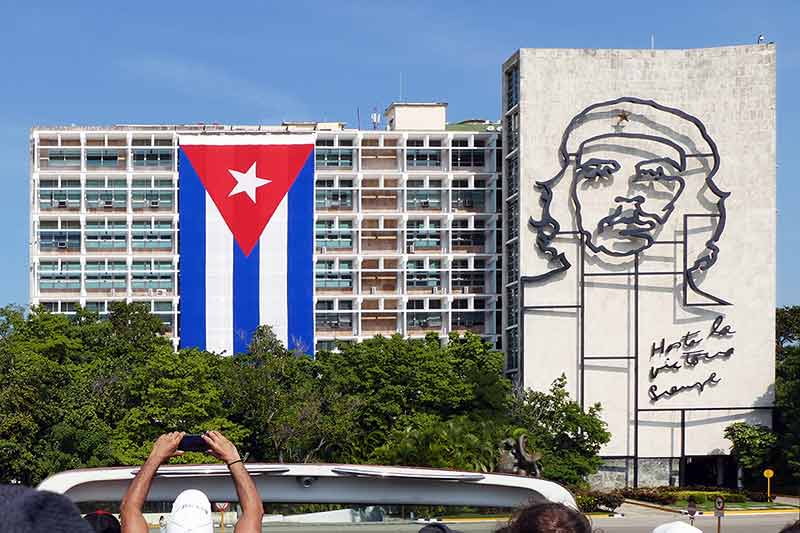
Fighting next to Fidel Castro in the Cuban Revolution was another now-famous figure, Ernesto Guevara.
Che Guevara was actually born in Argentina but played a major role in the Cuban Revolution, as well as other movements in South America.
In Cuba, Che Guevara, commonly known just as ‘Che’, is everywhere.
You can buy t-shirts, posters and flags with his face on, and street art of him is all over Havana, most famously in La Plaza de la Revolucion.
The Hotel Nacional was said to be the revolutionary base of Castro and Guevara, and you can also visit the Che Guevara Mausoleum in Santa Clara, where his remains are buried.
9- Coffee
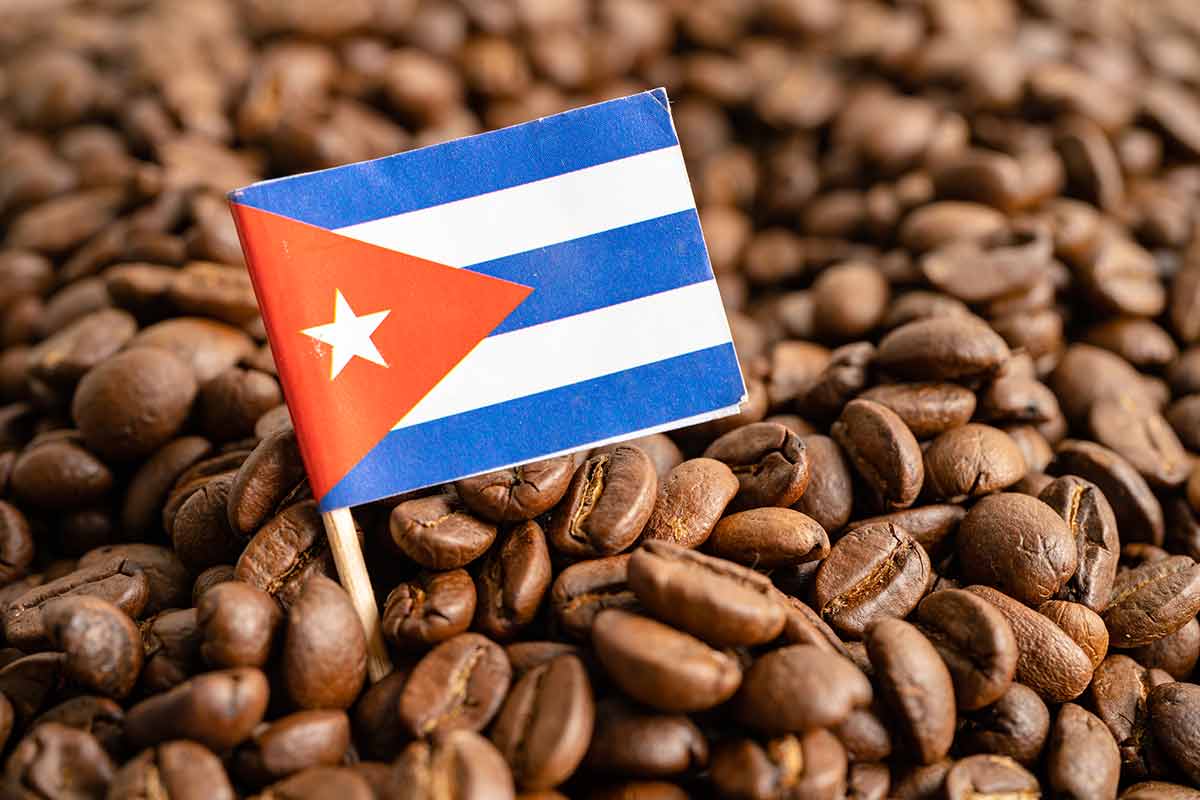
We’ve had rum and cigars, but many people don’t realise Cuba also produces some of the world’s best coffee.
Cuba grows coffee in three regions due to climate: the Sierra Maestra mountainous area, Pinar del Rio and Escambray; however, in southeast Cuba, you can also find the country’s first coffee plantation in Guantanamo.
The production of coffee in Cuba began in the 18th century, and now, Cuba is one of the world’s largest exporters.
The plantations here are even UNESCO World Heritage Sites.
You can buy a cup almost everywhere, and you may find it’s a lot darker and richer than you get back home, although traditionally, they also add demerara sugar to sweeten things up.
10- Classic Cars
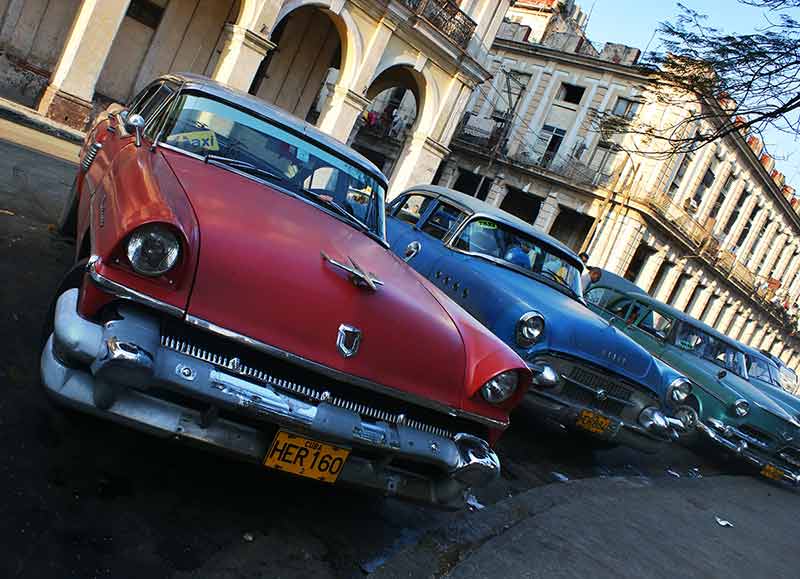
As soon as you arrive in Havana, you’ll spot classic cars everywhere.
Cuba is world-famous for having hundreds of shiny, brightly coloured vintage American cars on the streets, and there’s a fascinating reason why.
After the Cuban Revolution, the USA placed embargoes on Cuba and effectively cut off imports, meaning no new cars have arrived on the island in over half a century!
Instead, classic cars you’d see in the 50s and 60s are completely normal in Cuba, and Cuban people often save for years to invest in buying one.
Although they’re constantly being repaired, they’re all in excellent working condition and make for a fun ride.
One of the most popular things to do in Havana is take a city tour in one of these iconic cars with the top down – you can find dozens of locals around Parque Central offering to take you for a ride.
11- Music
Music is the beating soul of Cuba, as it is with many other Caribbean and Latin American countries.
Live music can be heard in restaurants, bars and cafes throughout the day, although be prepared that these bands will often ask for a tip, which can add up very quickly.
Cuba may be small, but Cuban music is popular worldwide, and the country invented rhythms like the rumba and bolero, among others.
The music involves all kinds of instruments, such as guitars or bass, piano, drums, saxophones, and singing, and it takes influence from other islands, Latin America, and even Africa.
Cuba’s music world is also not short of a famous face, with artists such as Gloria Estefan and the Buena Vista Social Club both hailing from the island.
12- Guantanamo Bay
Most people have heard of Guantanamo Bay and, based on its reputation, assume it’s on a remote, forsaken island somewhere out to sea, when in fact, it’s in sunny Cuba.
That’s not to say it’s a nice place – Guantanamo Bay is a United States military detention camp where some of the worst offenders in the world are sent.
George W Bush first created it following the 9/11 attacks, and it quickly became known as one of the worst and harshest prisons in the world, where currently only around 30 of the original 780 prisoners now remain.
Unfortunately (but not surprisingly), tourists can’t visit Guantanamo, but you can visit the beautiful region of Guantanamo itself, where there are white sand beaches, crystalline waters and a number of world heritage sites.
13- Architecture
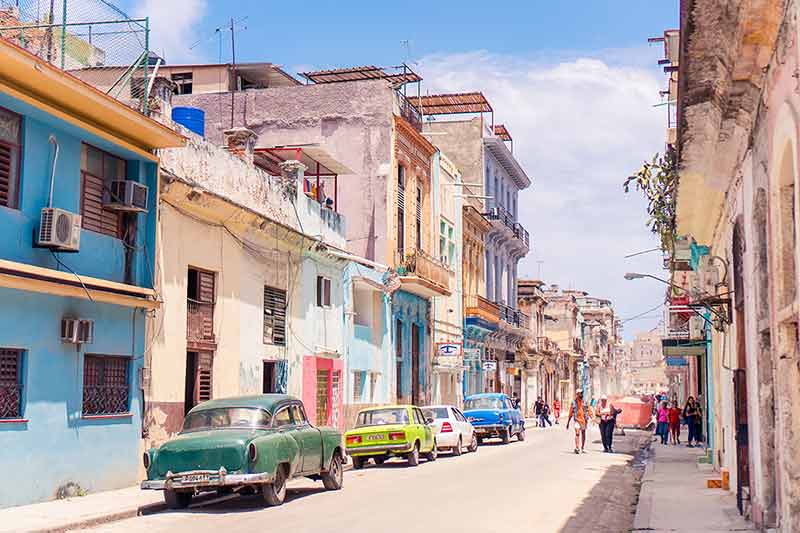
No matter where in Cuba you go, from Havana to Trinidad or Santiago de Cuba, the unique architecture is one of the first things you’ll notice.
There’s a heavy Spanish influence after they discover the island, but you can find a huge mix of styles here, from Baroque to Neoclassical, Moorish and Art Deco.
Havana has some stunning buildings if you’re interested in seeing a variety of architecture, such as Catedral de Habana and the buildings in Old Havana.
Across Cuba, you’ll notice many squares and streets with covered walkways, while buildings like the Capitol show the influence of the United States pre-revolution on the island.
Another two UNESCO World Heritage Sites are the cities of Trinidad and Cienfuegos, which are filled with cobblestone streets and feature stunning 18th-century colonial buildings.
14- Beautiful Beaches
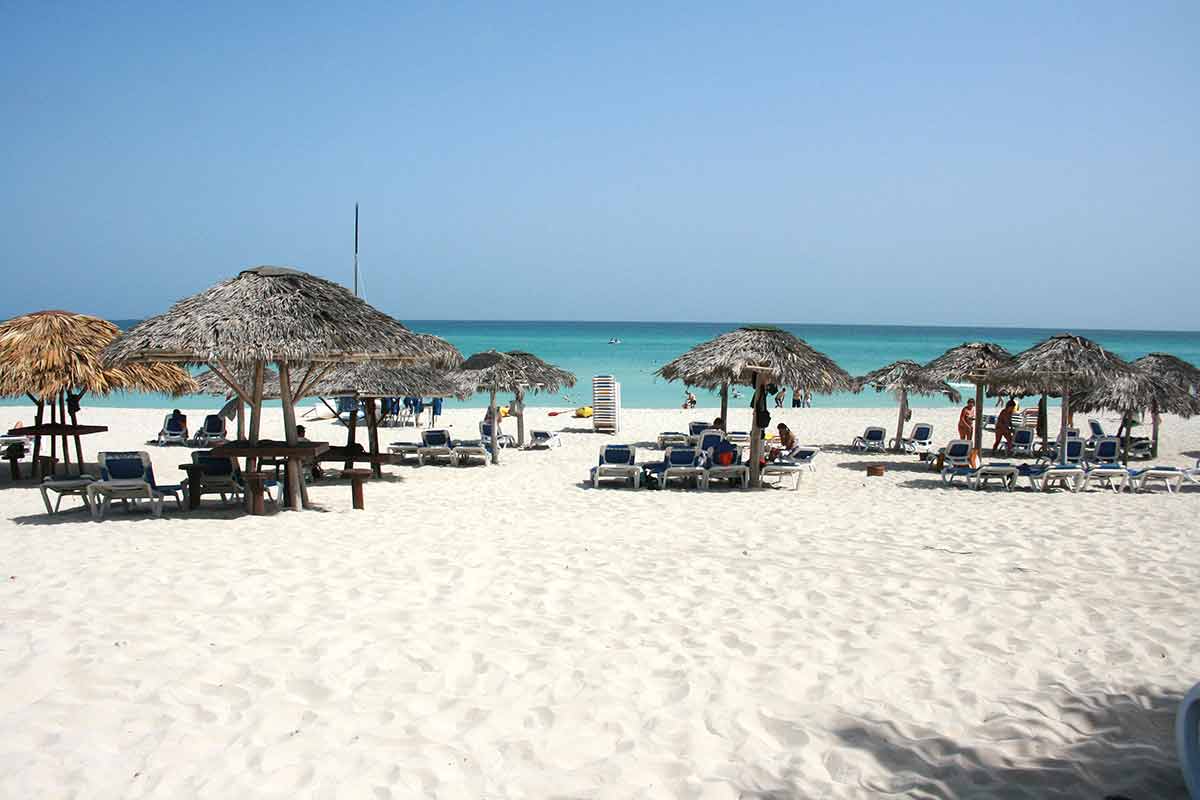
As mentioned, many people go straight to Varadero in Cuba’s north for their fix of beaches, and you wouldn’t be wrong for doing so, as the beaches here are as soft and white as anywhere in the Caribbean.
However, Cuba has 3,500 miles of coastline, meaning it isn’t short of incredible beaches, classic palm trees, sparkling water, and epic underwater adventures.
Although the resort-packed Varadero is beautiful, head for southern areas such as Trinidad’s Playa Ancon or tricky-to-reach spots like Cayo Jutias in the northwest for fewer people.
Other excellent choices include Punta Perdíz and Playa Giron, or the Bay of Pigs, known for a failed 1961 military invasion, as well as Playa Paraiso (Paradise Beach) and Playa Perla Blanca (White Pearl Beach), which describe themselves, and some of the harder to reach keys off the mainland.
15- Unique Wildlife
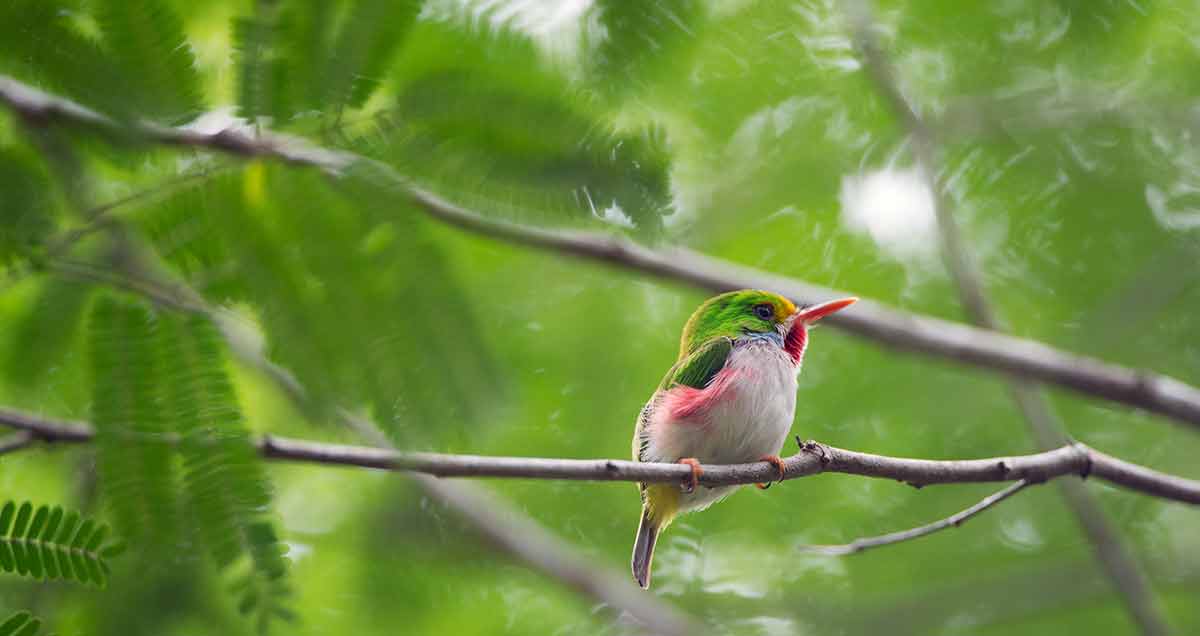
Thanks to the still somewhat limited infrastructure (there are no trains, and tourist buses are limited), lack of huge resorts besides those concentrated in Varadero, and how tricky it can be to get into Cuba, especially for Americans, the island remains blissfully untouched.
This means wildlife and nature is still thriving and you can find some amazing landscapes, habitats and species here.
The island has more than 7,000 plant species, including the mariposa, which is Cuba’s national flower.
You can also find the world’s smallest bird, the bee hummingbird, the world’s smallest frog and the world’s smallest bat!
The country’s most endangered native reptile, the Cuban Crocodile, is only found on the island, plus there are almost 400 species of bird and 100 species of palm tree.
You can find all kinds of scenery too, from spectacular coral reefs, caves and waterfalls to jungles-covered hills, beaches, mangrove forests and scrub desert.
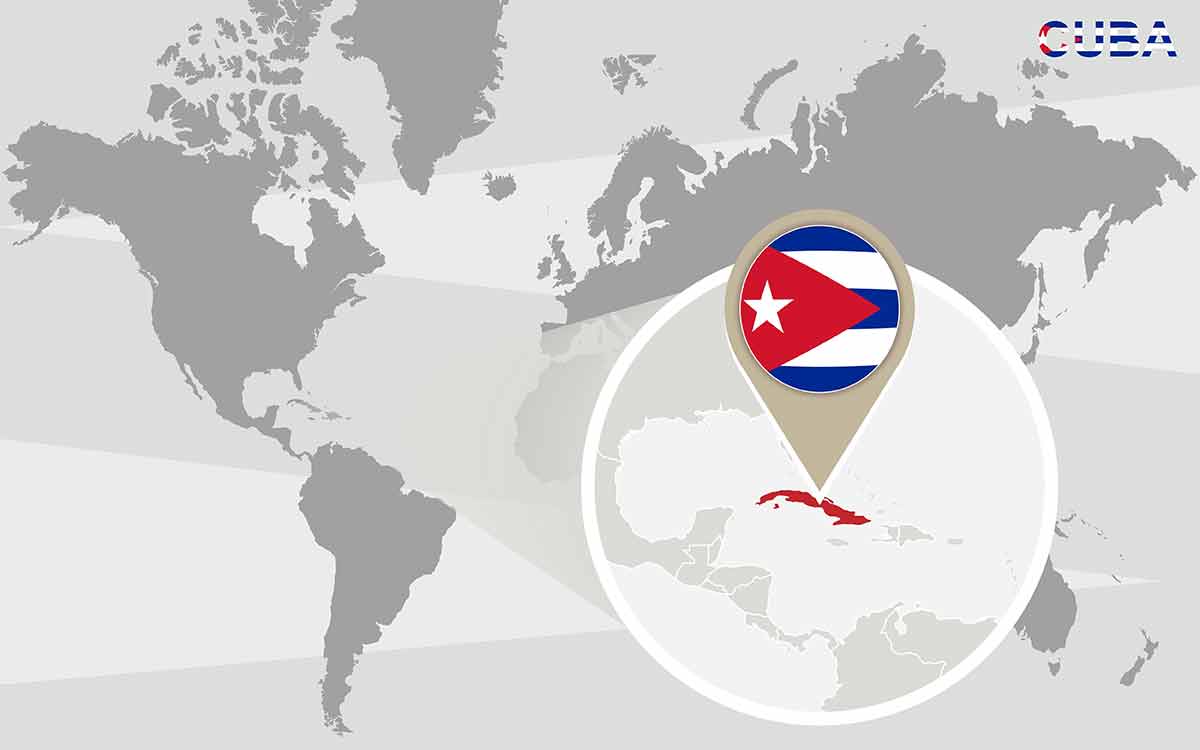
Plan Your Trip

Rent A Car – Find the best car rental rates at Discover Cars. They compare car hire companies to provide you with the best deal right now.

Find A Hotel – If you’re curious about this article and are looking for somewhere to stay, take a look at these amazing hotels.
